Confronting the Modern Era
The period from 1877 to 1929 marks a time of great change in Tennessee.
During this time, Tennesseans witnessed increases in industrial manufacturing and modernization of agriculture. Because of this unprecedented expansion of business, population, and industry, historians sometimes call this era “The Gilded Age.”
After the Civil War, businessmen from across the country promoted new money-making ventures in the South.
They were promised that state governments, although desperate for tax income, would keep business taxes low and not pass restrictive labor laws. Laborers, who needed money after the devastation of the war, would work for low wages.
In turn, business and industry would make large donations to politicians in order to keep the relationship working.
However, not all Tennesseans were satisfied with this practice. Some Tennessee farmers protested low prices by joining Populist political movements. At the same time, industrial workers fought low wages and poor working conditions by striking or attempting to join unions .
During this period, white supremacy became more institutionalized with the passage of Jim Crow laws and segregation. African Americans were adversely affected by both laws and a restrictive social environment.
However, this period also includes reforms in an effort to improve people’s lives. Some Tennesseans worked to improve the state by developing public services, addressing social problems, and protesting inequality. The political and social reforms of this era improved many of the state’s institutions as well as the private lives of its citizens.
In spite of these changes, many aspects of Tennessee remained the same. Tennesseans continued to express their heritage and pride through the arts. Religion also emphasized traditional values and practices. This relationship between change and tradition helped define Tennessee conflict during the late 1800s and early 1900s.
AcknowledgmentsTeacher's Page
Picture Credits:
- Photograph showing poor housing. These homes belonged to poor African Americans who lived in Chattanooga. This picture was created in 1899 and part of the W.E. B. Du Bois photograph collection displayed at the 1900 Paris World’s Fair Exhibition. It shows a child standing on a porch and another standing nearby. Railroad tracks located close to the houses can also be seen. Library of Congress.
- Photograph showing modern housing. This photo was taken in 1910 in downtown Nashville. It shows two brownstone town homes. A girl and a man can be seen standing in the doorway. Tennessee State Library and Archives.
- Photograph showing five Confederate Tennessee Confederate veterans. This photo was taken at a reunion sometime before 1933. Tennessee State Library and Archive.
- Photograph showing three miners dressed in work clothes and holding mining equipment. This photograph was taken sometime between the 1880s and the 1920s. Tennessee State Library and Archive.
- Photograph of downtown Morristown, Tennessee. This photo was taken in 1915. It shows numerous people on Main Street before it was paved. Electric poles can be seen along with automobiles and carriages. Hamblen County Archives.
- Photograph of downtown Chattanooga. This photo was taken in 1909. It shows numerous people on Market Street. A streetcar, automobile and several businesses can also be seen. Chattanooga-Hamilton County Bicentennial Archives.
- Photograph of a cotton field. This photo was first published in 1903 the book, Sketch book of Livingstone College and East Tennessee Industrial School, Salisbury, N.C. It shows several African Americans picking cotton in the back of Dodge Hall. New York Public Library.
- Photograph of a wealthy family. This photo was taken in the Knoxville probably sometime before 1930. It features a well dressed mother and son. McGhee Family Collection.
- Photograph of a middle class family. This photo was taken in 1915. It shows two parents and their four children. Tennessee State Museum Collection.
- Photograph showing women basket weaving. This photo shows Mrs. J. C. Rogers and her daughter Agnes making honeysuckle baskets. Tennessee State Library and Archives.
Acknowledgments:
Confronting the Modern Era >>
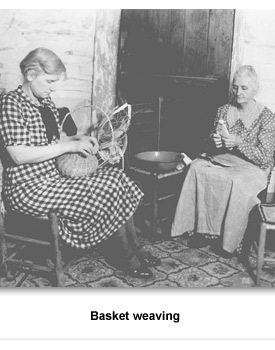
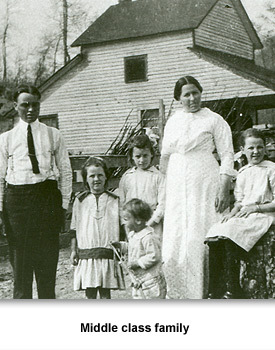
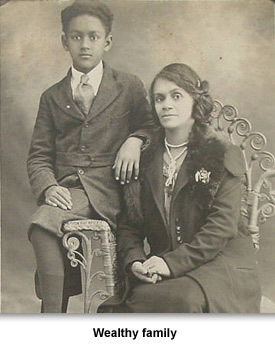
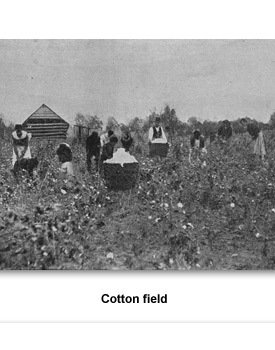
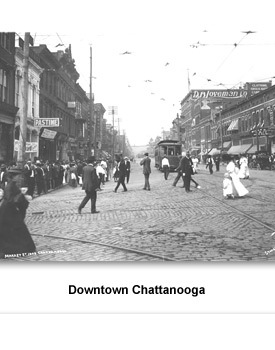
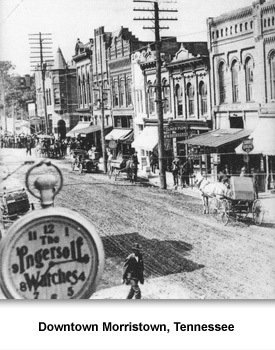
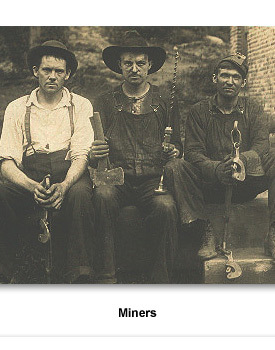
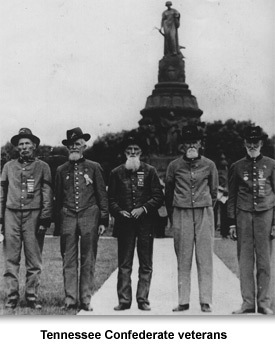
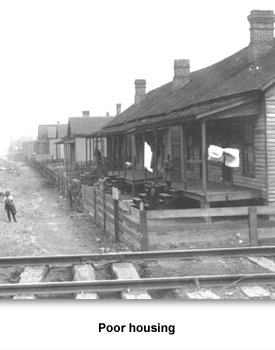
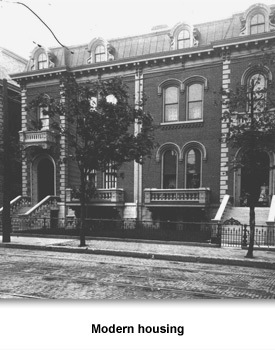
 Sponsored by: National Endowment for the Humanities
Sponsored by: National Endowment for the Humanities